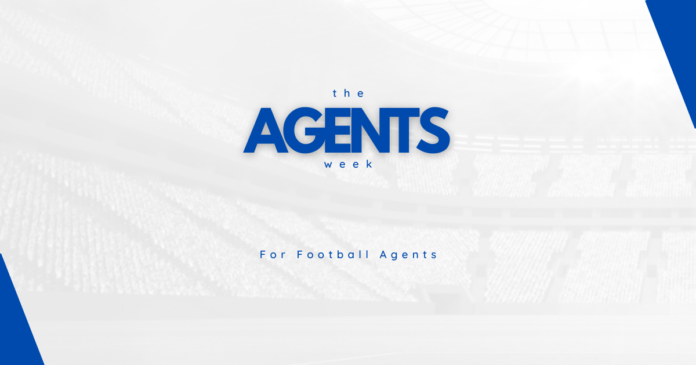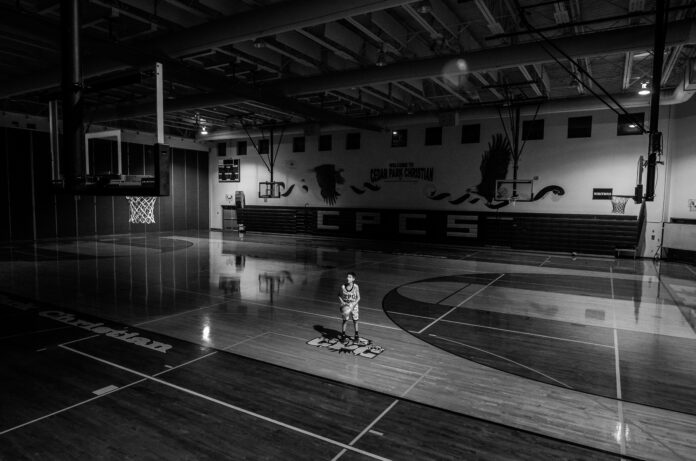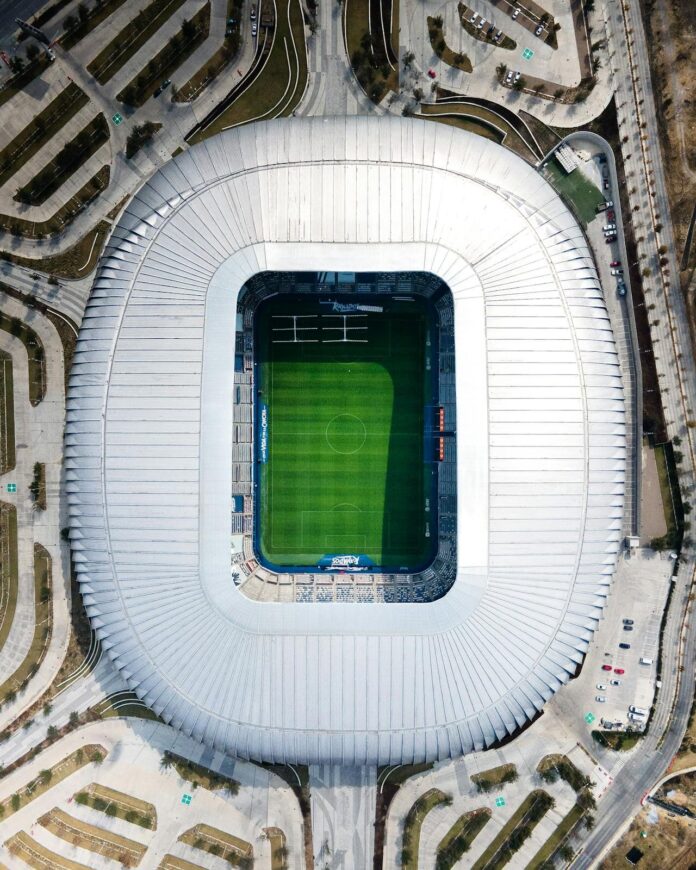Introduction
Le 22 mai 2024, la prochaine cohorte de candidats passera la troisième édition de l’examen des agents de football de la FIFA depuis sa réintroduction en 2023. Dans le cadre de nos cours sur la manière de réussir l’examen et comme guide supplémentaire pour devenir agent de football, nous avons décidé de créer plusieurs blogs sous forme d’examens pratiques fictifs pour vous aider à vous préparer en testant vos connaissances et en répondant à certaines questions dans le même style que celui du vrai examen.
Avant de tenter cet examen fictif, nous vous recommandons également de lire nos 10 meilleures astuces pour réussir l’examen des agents de football de la FIFA et d’appliquer certaines de ces astuces clés, telles que vous assurer de bien lire les questions et utiliser le processus d’élimination si vous ne connaissez pas immédiatement la réponse. Vous devriez également avoir lu une quantité substantielle de documents d’étude et consacré du temps à d’autres formes d’apprentissage, en particulier à la compréhension des sujets les plus essentiels. Vous remarquerez que les liens hypertextes sur certaines des questions de cet examen fictif vous renverront à d’autres ressources utiles sur les sujets abordés. Si vous êtes bloqué, cela devrait vous aider !
Examen fictif
1.Dans une affaire en cours devant la Chambre de résolution des litiges de la FIFA, la Chambre a décidé que le joueur, Roméo, a droit à une indemnisation pour rupture de contrat car le club n’a pas payé sa rémunération et il a donc résilié le contrat. Pendant ce temps, Roméo a signé un nouveau contrat avec un autre club. À quoi Roméo a-t-il droit en plus de l’indemnisation conformément à l’article 17 du Règlement de la FIFA sur le statut et le transfert des joueurs ? Sélectionnez une réponse :
1.a. Dommages moraux
2.b. Remboursement de ses frais de justice
3.c. Aucun droit supplémentaire
4.d. Indemnisation supplémentaire
- Deux clubs d’Italie, FC Leaning Tower et FC Colosseum, ont identifié Layla de Nouvelle-Zélande comme une addition potentielle à leurs effectifs car elle a été l’une des meilleures joueuses de la ligue australienne ces dernières années et son contrat professionnel actuel expire dans 3 mois. Après avoir effectué des recherches supplémentaires, des responsables du FC Leaning Tower et du FC Colosseum ont découvert que son agent de football est Michael, un agent de football japonais qu’ils connaissent très bien et qui est disponible pour travailler avec les deux clubs. Michael reçoit deux e-mails de ses contacts en Italie et réalise immédiatement qu’il y a beaucoup d’intérêt pour les services de Layla et qu’il pourrait obtenir des frais de service s’il représente également AFC Kiwi, le club actuel de Layla. Après avoir conclu un accord de représentation exclusif avec AFC Kiwi pour représenter le club dans tous les transferts au cours des six prochaines années, Michael fait des offres à la fois au FC Leaning Tower et au FC Colosseum pour faciliter le transfert de Layla de la Nouvelle-Zélande vers l’Italie. Cependant, Layla est inquiète que l’idée de Michael ne fonctionne pas, malgré son accord à tout par écrit. Quel semble être le problème ? Sélectionnez une ou plusieurs réponses :
1.a. Michael ne peut pas représenter à la fois Layla et AFC Kiwi
2.b. Layla n’a aucune opportunité de se représenter elle-même car Michael a des accords de représentation avec elle et AFC Kiwi
3.c. Michael a des liens amicaux avec des responsables à la fois du FC Leaning Tower et du FC Colosseum, ce qui le met dans une situation de conflit d’intérêts
Michael a un accord de représentation avec AFC Kiwi pour une durée plus longue que la durée maximale d’un accord de représentation autorisée par la FIFA
- Un club a transféré un joueur mineur en violation de l’article 19 du Règlement de la FIFA sur le statut et le transfert des joueurs. Quel organe de la FIFA est compétent pour entendre l’affaire et imposer d’éventuelles sanctions au club ? Sélectionnez une réponse :
1.a. La Cour d’arbitrage du sport
2.b. Le Tribunal du football de la FIFA
3.c. Le Comité d’éthique de la FIFA
4.d. Le Comité de discipline de la FIFA
- Sur quelle base le montant de la contribution de solidarité est-il calculé ? Sélectionnez une réponse :
1.a. Le salaire du joueur
2.b. La valeur marchande du joueur
3.c. Tout montant de transfert payé d’un club à un autre club
4.d. Tous les paiements effectués dans le cadre d’un transfert, y compris les paiements club-joueur/agent
- Quels sont les coûts de procédure maximum pouvant être imposés à un joueur, un entraîneur, un agent de football ou un agent de match dans les litiges devant le Tribunal du football ? Sélectionnez une réponse :
1.a. 25 000 USD
2.b. Aucun, car de telles procédures sont gratuites
3.c. 10 000 USD
4.d. 5 000 USD
- Quelles activités suivantes constituent-elles des services d’agent de football ? Sélectionnez une ou plusieurs réponses :
1.a. Organiser des essais avec des clubs
2.b. Négocier avec un entraîneur pour qu’un client soit appelé dans leur équipe représentative respective pour la Coupe du Monde de la FIFA™
3.c. Négocier la résiliation d’un contrat professionnel
4.d. Représenter des clients devant le Tribunal du football
- La Coupe du Monde de la FIFA™ approche et Lewis veut vraiment représenter son équipe nationale de Pearania, qui s’est qualifiée pour la première fois. Cependant, Lewis a 23 ans et joue dans un autre pays, Banania. Il n’est pas très connu à Pearania. Un agent de football local de Pearania, Lennox, découvre que l’équipe nationale de Pearania recherche un joueur comme Lewis pour compléter leur effectif. Lennox fait une
Approche à Lewis et lui propose un accord de représentation exclusif de six mois selon lequel il assurera à Lewis une place dans l’équipe de la Coupe du Monde de Pearania en échange de 3 % de la prime de jeu reçue de l’Association de football de Pearania. Lewis devrait-il conclure un tel accord de représentation ? Sélectionnez une réponse :
1.a. Non, car Lennox ne fournirait pas de services d’agent de football
2.b. Non, car Lewis et Lennox sont domiciliés dans des pays différents
3.c. Oui, car le Règlement des agents de football de la FIFA s’applique à toutes les questions liées à la Coupe du Monde de la FIFA
4.d. Oui, car 3 % se situe dans le plafond des frais de service établi par le Règlement des agents de football de la FIFA
- Si un joueur mineur se voit offrir un contrat professionnel par un club étranger, quand peut-il être représenté par un agent de football ? Sélectionnez une réponse :
1.a. Immédiatement, et aucun consentement des tuteurs légaux n’est requis car un contrat professionnel a déjà été offert
2.b. Une fois que le joueur atteint l’âge de 18 ans, car il s’agit d’un transfert international
3.c. Immédiatement, si leurs tuteurs légaux acceptent de faire une Approche et cosignent le contrat de représentation et que l’agent de football a réussi le cours de formation continue sur les mineurs
4.d. Une fois que le joueur atteint l’âge qui est de six mois plus jeune que l’âge auquel il peut signer son premier contrat professionnel dans le pays où il est domicilié
- La compensation de formation n’est pas due si : Sélectionnez une ou plusieurs réponses :
1.a. un joueur résilie son contrat avec son ancien club sans cause justifiée
2.b. l’ancien club d’un joueur résilie son contrat sans cause justifiée
3.c. un joueur est transféré pendant l’année civile de son 24e anniversaire
4.d. un joueur s’inscrit dans un club de catégorie IV en matière de formation
- Si un joueur ne se conforme pas à une décision financière (ou non financière) prise par un organe décisionnel compétent au sein de l’association concernée, quel organe est compétent pour appliquer cette décision ? Sélectionnez une ou plusieurs réponses :
1.a. L’association de l’organe ayant pris la décision
2.b. Le Comité de discipline de la FIFA
3.c. La nouvelle association du joueur si ce dernier s’est entre-temps inscrit dans un club affilié à une autre association
4.d. La Cour d’arbitrage du sport
- Une clause contractuelle stipulant une prime de réversion enfreint-elle l’article 18bis du Règlement de la FIFA sur le statut et le transfert des joueurs ? Sélectionnez une réponse :
1.a. Non, les clauses contractuelles avec des primes de réversion ne pourraient jamais entraîner une violation de l’article 18bis du Règlement de la FIFA sur le statut et le transfert des joueurs
2.b. Uniquement lorsque cette clause impose une obligation au club contre qui limite l’indépendance du club en matière d’emploi et de transferts
3.c. Oui, les clauses contractuelles avec des primes de réversion constituent toujours une violation de l’article 18bis du Règlement de la FIFA sur le statut et le transfert des joueurs
4.d. Oui, les primes de réversion ne sont pas admissibles par la FIFA
- Un joueur donne un coup de coude à un officiel de match après un match lors de la Coupe du Monde U-20 de la FIFA™. Quelles affirmations suivantes sont correctes ? Sélectionnez une ou plusieurs réponses :
1.a. L’association nationale du joueur sera conjointement responsable de toute amende infligée au joueur
2.b. Le joueur recevra une sanction plus sévère pour avoir agressé un officiel de match que pour avoir agressé un adversaire
3.c. L’agression peut entraîner une sanction uniquement si le joueur est expulsé par l’arbitre
4.d. Le joueur sera suspendu pour au moins 15 matchs ou une période de temps appropriée
- L’interdiction des transferts intermédiaires s’applique-t-elle aux prêts ? Sélectionnez une réponse :
1.a. Oui, l’article 5bis du Règlement de la FIFA sur le statut et le transfert des joueurs s’applique à la fois aux prêts et aux transferts permanents
2.b. Non, l’article 5bis du Règlement de la FIFA sur le statut et le transfert des joueurs ne concerne que les transferts permanents
3.c. Oui, mais uniquement si le prêt a lieu au niveau national
4.d. Oui, mais uniquement si le prêt a lieu dans les 16 semaines suivant le dernier match d’un joueur en tant que professionnel
- Lorsqu’une Entité engageante paie les frais de service au nom d’un Individu, quelles conditions suivantes s’appliquent ? Sélectionnez une ou plusieurs réponses :
1.a. La rémunération annuelle négociée doit être supérieure à 200 000 USD
2.b. L’Individu doit être mineur
3.c. L’Individu et l’Entité engageante doivent être d’accord
4.d. Les frais de service ne doivent pas être déduits de la rémunération d’un Individu
- Après avoir été informé de l’échec d’une première évaluation de conformité, combien de temps la partie concernée dispose-t-elle avant que le secrétariat général de la FIFA ne soumette la transaction à nouveau à la Chambre de compensation de la FIFA pour une deuxième évaluation de conformité ? Sélectionnez une réponse :
1.a. Un an
2.b. Un mois
3.c. Six mois
4.d. Trois mois
- Si un joueur ne reçoit que 70 % de son salaire et 100 % de ses paiements conditionnels, combien des frais de service convenus doivent être payés à l’agent de football du joueur ? Sélectionnez une réponse :
1.a. 100 % des frais de service totaux
2.b. 85 % des frais de service totaux
3.c. 70 % des frais de service totaux
4.d. 70 % calculés sur la base du salaire et 100 % calculés sur la base des paiements conditionnels
- Quelles sanctions peuvent être imposées à un club de formation s’il échoue à la première évaluation de conformité de la Chambre de compensation de la FIFA en relation avec une déclaration d’allocation ? Sélectionnez une ou plusieurs réponses :
1.a. Une renonciation aux récompenses de formation
2.b. Un avertissement
3.c. Une interdiction d’enregistrer de nouveaux joueurs
4.d. Une amende
- Un joueur peut-il être sanctionné pour violation de l’article 5bis du Règlement de la FIFA sur le statut et le transfert des joueurs (RSTP) ? Sélectionnez une ou plusieurs réponses :
1.a. Oui, mais seulement les joueurs amateurs
2.b. Oui, mais seulement les joueurs professionnels, car les joueurs amateurs ne sont pas censés respecter les règlements de la FIFA
3.c. Non, car l’article 5bis du RSTP s’applique uniquement aux clubs
4.d. Oui
- À propos de quoi un agent de football ne peut-il pas facturer de frais de service ? Sélectionnez une ou plusieurs réponses :
1.a. La prime conditionnelle du club après que son ancien joueur a remporté une compétition continentale
2.b. La prime de fidélité du joueur après 12 mois
3.c. La prime de performance du joueur après dix buts
4.d. La prime de réversion du club
- Qu’est-ce qui est considéré comme une Approche à un joueur ? Sélectionnez une ou plusieurs réponses :
1.a. Un e-mail à un joueur
2.b. Un message sur les médias sociaux
3.C. Une réunion avec le frère d’un joueur
4.d. Un e-mail au club d’un joueur concernant un transfert potentiel d’un autre joueur
Réponses
D
A
D
C
B
A & C
A
C
B,C,D
A & C
B
A,B,D
A
C & D
C
D
B & D
D
D
A,B,C
Résumé
Comment cela s’est-il passé pour vous ?
Ce blog vous a probablement fourni quelques questions pratiques utiles qui démontrent le style de questions et de réponses que la FIFA utilisera dans l’examen et a peut-être mis en évidence des domaines clés que vous devez revisiter et affiner vos connaissances pendant votre préparation à l’examen des agents de football de la FIFA. Nous vous conseillons de vous engager avec autant de questions pratiques que possible sur ces différents documents et de vous assurer d’avoir de bonnes compétences de navigation pour pouvoir trouver efficacement chaque section pertinente dans l’examen.
Pour plus d’informations sur la manière de devenir agent de football et de réussir l’examen de la FIFA, surveillez nos cours et ressources supplémentaires publiés sur nos plateformes de médias sociaux sous l’Académie des agents sportifs.









